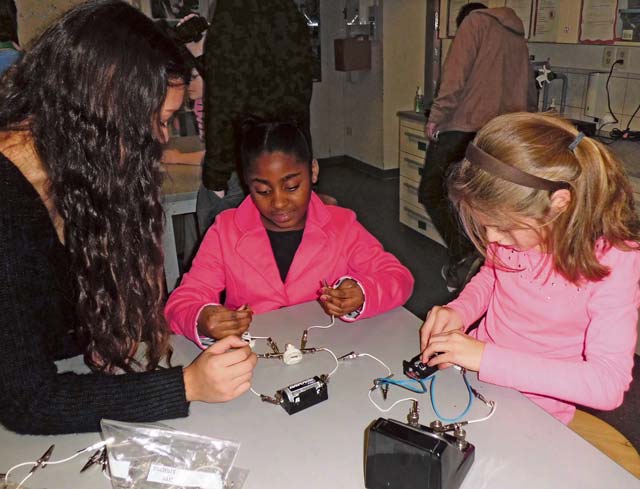Many people have theorized on what makes this world go ‘round, but no one has come closer than those who agree on science. Science is quite literally what keeps our Earth turning, our plants growing and our bodies working. However, it’s hard to forget the smaller parts of science that we enjoyed as children. Take magnetism, for example. Such a “simple” concept of attraction of opposites and repulsion of similar sides could entertain for days, but even the science behind magnets is more complicated on a level we once never knew.
This is where science becomes a universally enjoyable subject at school. Students from their elementary to high school years can learn the various realms of knowledge that science has to offer. Nancy Hoehn’s Kaiserslautern High School physics application classes were able to experience this first-hand with groups of Kaiserslautern Elementary School’s younger students.
For four days, these adolescents and children, separated by age, intermingled to engage in activities involving magnetism, light, electricity, forces, motion and properties of matter. With six different stations that each younger student rotated through, it’s no surprise the room was filled with excitement and energy. Each demonstration taught one of the aforementioned parts of physics.
Using inquiry-based learning, Hoehn’s students were able to teach the first through fifth graders all about science in everyday life and more abstract parts of the scientific world in which we live. Having fun while learning has become a much greater part of learning, now more than ever, and it’s easy to see with the smiles on children’s faces lighting up as they’re taught science. After all, science is what makes the world go ‘round.








